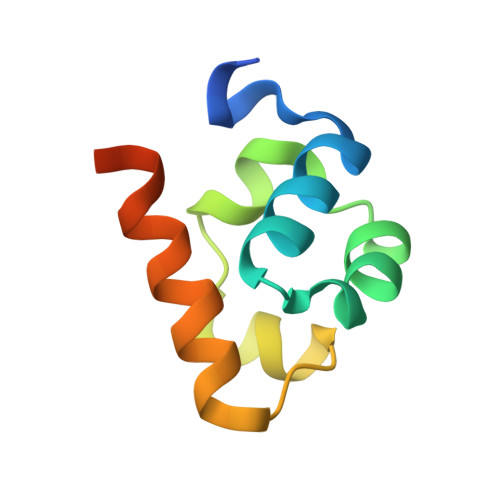Regulation of Enzyme Localization by Polymerization: Polymer Formation by the SAM Domain of Diacylglycerol Kinase delta1
Harada, B.T., Knight, M.J., Imai, S., Qiao, F., Ramachander, R., Sawaya, M.R., Gingery, M., Sakane, F., Bowie, J.U.(2008) Structure 16: 380-387
- PubMed: 18334213
- DOI: https://doi.org/10.1016/j.str.2007.12.017
- Primary Citation of Related Structures:
3BQ7 - PubMed Abstract:
The diacylglycerol kinase (DGK) enzymes function as regulators of intracellular signaling by altering the levels of the second messengers, diacylglycerol and phosphatidic acid. The DGK delta and eta isozymes possess a common protein-protein interaction module known as a sterile alpha-motif (SAM) domain. In DGK delta, SAM domain self-association inhibits the translocation of DGK delta to the plasma membrane. Here we show that DGK delta SAM forms a polymer and map the polymeric interface by a genetic selection for soluble mutants. A crystal structure reveals that DGKSAM forms helical polymers through a head-to-tail interaction similar to other SAM domain polymers. Disrupting polymerization by polymer interface mutations constitutively localizes DGK delta to the plasma membrane. Thus, polymerization of DGK delta regulates the activity of the enzyme by sequestering DGK delta in an inactive cellular location. Regulation by dynamic polymerization is an emerging theme in signal transduction.
- Molecular Biology Institute, University of California, Los Angeles, Boyer Hall, Los Angeles, CA 90095-1570, USA.
Organizational Affiliation:
















